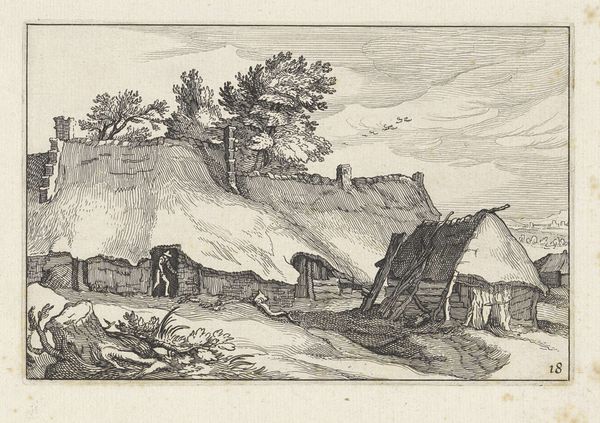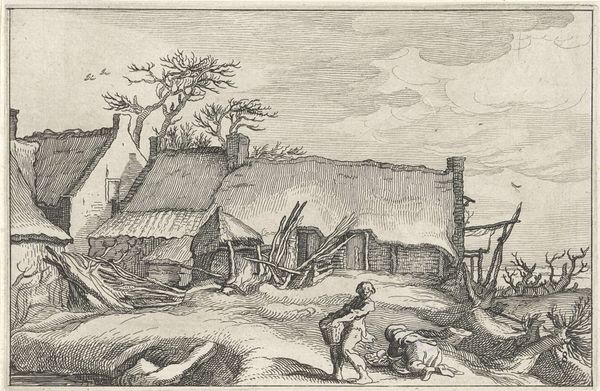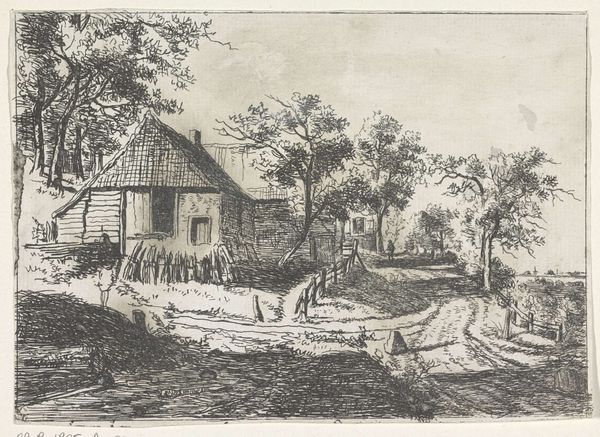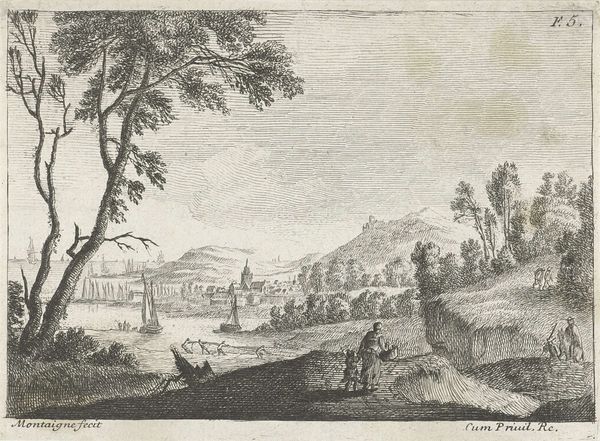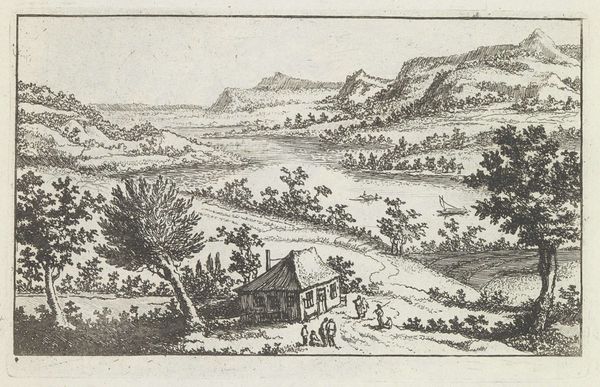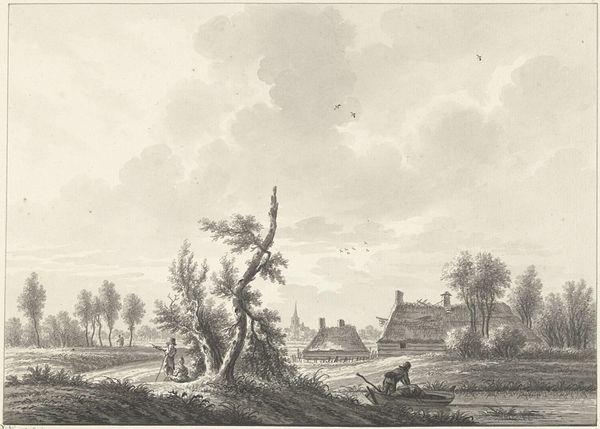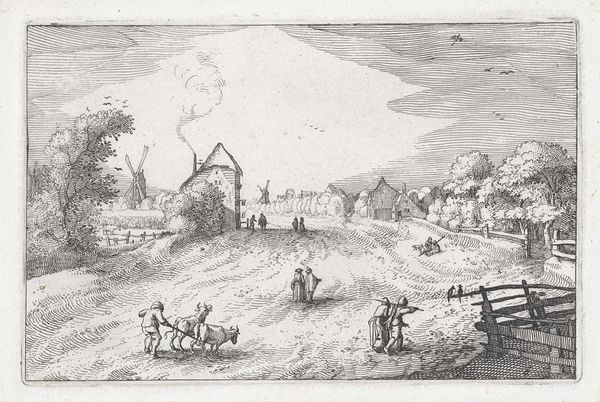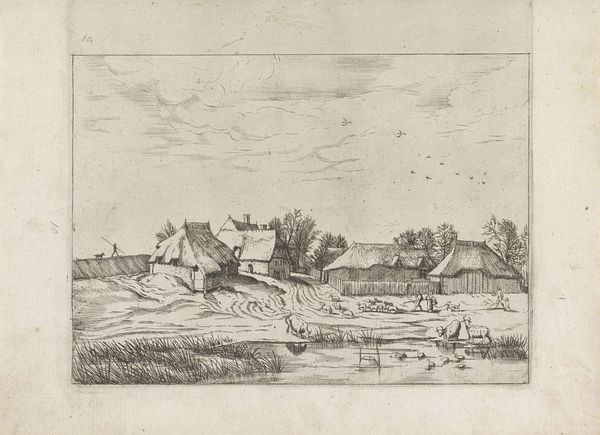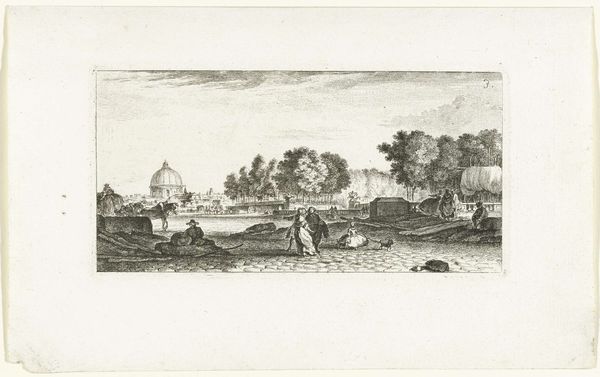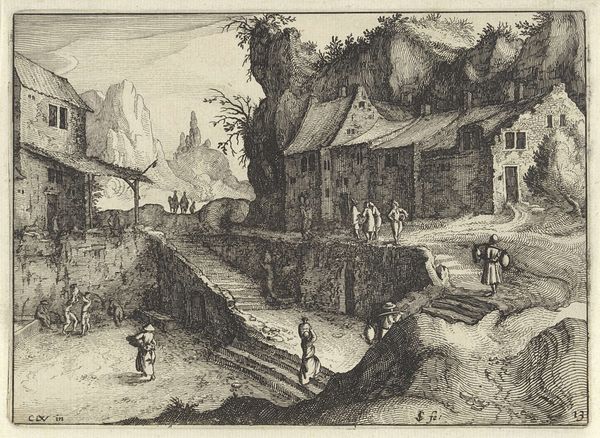
print, etching
#
dutch-golden-age
# print
#
etching
#
landscape
#
genre-painting
#
realism
Dimensions: height 103 mm, width 158 mm
Copyright: Rijks Museum: Open Domain
Curator: Looking at this etching, “Bleekvelden in de duinen bij Haarlem” or "Bleaching Fields in the Dunes near Haarlem" crafted sometime between 1612 and 1652 by Claes Jansz. Visscher, now residing here at the Rijksmuseum. The everyday is celebrated here. What’s your immediate reaction to this depiction? Editor: I’m struck by how ordinary it is. It’s just… work. Hard work. There’s something deeply human in its depiction of labor within the landscape, and, frankly, somewhat melancholic, though realistic, about the scene. The contrast feels almost stark. Curator: The image does reveal the laborious process of bleaching textiles. These fields were crucial for Haarlem's textile industry during the Dutch Golden Age. See how they spread linen on the dunes to be whitened by the sun, a method distinct from the use of chemical treatments common today. Editor: Absolutely, and seeing this process memorialized makes me think about the hands, mostly those of women and the working class, that physically made this economy thrive. These landscapes have economic implications that tie directly into gender and class, creating an intersectional story here. The etching normalizes and at once, memorializes this practice and lifestyle. Curator: Indeed. Visscher wasn’t just rendering a scene, he was capturing a piece of the Dutch economy's foundation, creating an artistic record that also had commercial value in its time as prints like this would have been sold to a wide audience. The etching technique itself allowed for wide distribution. Editor: I wonder if, for its original viewers, it evoked feelings tied to the commercial culture around them: pride, yes, but perhaps also concern with rapid urbanization. Now we look back, and it speaks to something altogether different. Curator: I agree. As historians, it's our duty to bring awareness to its various potential interpretations and contextual layers, as you aptly describe, rather than viewing it merely as quaint folklore. Editor: So true. I find that seeing the past represented is never a neutral experience but, at the very least, sparks much-needed dialogue.
Comments
No comments
Be the first to comment and join the conversation on the ultimate creative platform.
